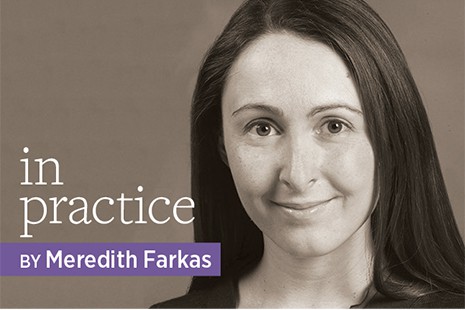
Cultural fit is often difficult to describe but refers to how well an employee matches the environment and values of their organization. Despite its ineffability, fit can play a significant role in hiring decisions. A survey of academic librarians found that cultural fit was valued more highly in hiring than previous experience, job performance, skills, and knowledge of professional trends. I once worked at an institution where I was a poor fit for the culture and can attest to how demoralizing that situation can be. I’ve also served on hiring committees where it was clear that our conceptions of cultural fit held nearly as much weight in decision making as did the stated qualifications.
A major issue with hiring for cultural fit is the potential to stifle diversity. We are all influenced by cognitive biases, the shortcuts our brains are programmed to take to help us make decisions. Those biases often lead us to value and want to be around people who are more like us. Whether that means we prefer people who have similar interests or backgrounds, or who are graduates of our alma mater, affinity bias, among other biases, plays a huge role in keeping many industries homogeneous and preventing people who do not match the dominant culture from climbing the career ladder.
While it’s natural to feel more comfortable with people who are like us, we can generate significant benefits from workplace diversity and our discomfort. Having team members with unique backgrounds and perspectives can challenge entrenched beliefs and lead to better problem solving. One study found that businesses that scored well on multidimensional measures of diversity developed more products in the same period of time, an important metric of innovation.
Some authors argue that hiring for cultural fit can ensure the applicant shares the values of the organization, which is important. However, it’s often difficult to see when our considerations around cultural fit are leading us to discount diverse candidates. This is especially true when groups haven’t explicitly developed a shared definition of what good fit looks like.
Having team members with unique backgrounds and perspectives can challenge entrenched beliefs.
When you examine the library literature for mentions of cultural fit, it’s easy to see how evaluating candidates this way can lead to a monoculture. In one article, a survey respondent wrote “we are a small academic library in a small city…. If a person seemed too ‘cosmopolitan’ we would not consider them.” In another article the authors mentioned that they prejudged candidates based on the article they chose to share: “If the article was … on a tenet with which [the unit members] did not agree, the group was less likely to respond favorably.”
The biggest challenge in combating these biases is that they are largely unconscious. It would help, then, to remove or reveal subjectivity in our decision making as much as possible. This could include blinding résumés to remove indicators of race, class, and gender; using standardized interview questions; using a scoring rubric to judge candidates; having antibias-trained outsiders who can uncover prejudices on your search committees; and having search committee members explicitly discuss their biases (see bit.ly/AL-Fit9 and bit.ly/AL-Fit10 for additional suggestions). While we can’t entirely remove biases from our decision making, we can reveal and question the things members of the search committee value around fit.
Instead of focusing on hiring people who fit the dominant culture, libraries should explore why others are viewed as bad fits in the first place and how the organization can better appreciate people who don’t conform. A critical part of diversity initiatives is inclusion, and organizations will have to look at how welcome and valued everyone is made to feel if they want to improve diversity in the long term.

